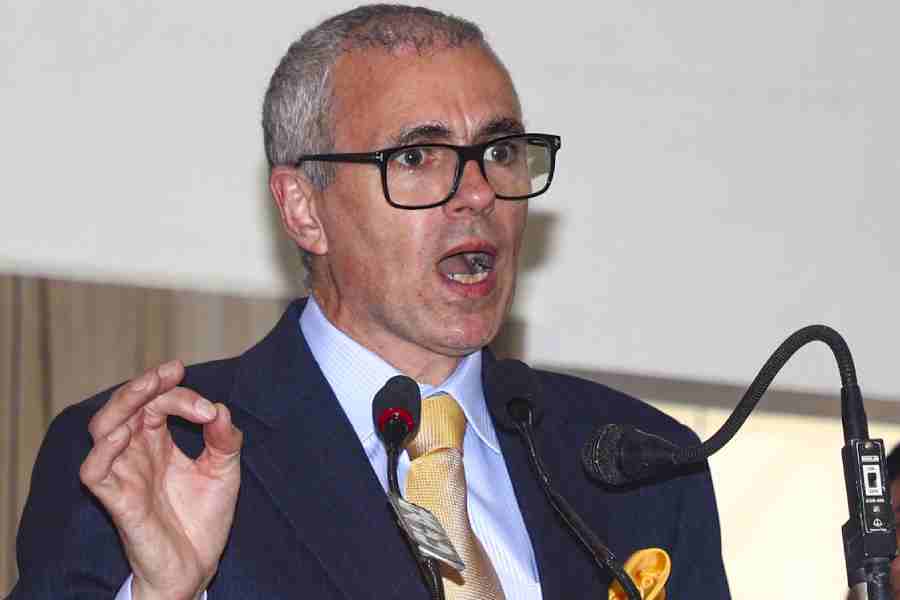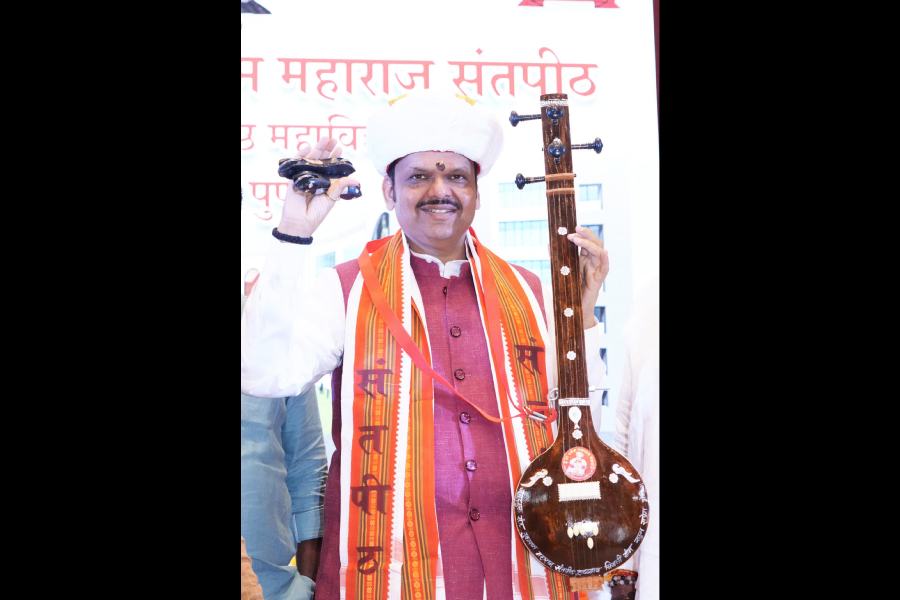 |
Will Indian art connoisseurs soon be splurging on splashy superstars like Damien Hirst who made the world take notice with his shocking creations like a shark preserved in formaldehyde? Or, will they be putting red dots on other global trendsetters like Marc Quinn who famously drained blood from his own body and used it in an artwork that has to be kept constantly refrigerated?
Alternatively, will the top bracket of well-heeled Indian art lovers turn their eyes on the classics like Pablo Picasso or Marc Chagall, one of whose paintings was at the India Art Fair in Delhi — on sale for almost 500,000 euros?
One thing’s for sure after the mega 3rd India Art Fair — the foreign art galleries now have the Indian art lover squarely in their sights. As the curtain went up on the art fair it was clear that the smart movers from foreign shores had grabbed a large chunk of the physical — and mental — space at the fair. There were a record 43 foreign galleries that had turned up to display their head-turning wares — almost as many as the 48 Indian galleries that took part — from countries as far apart as Argentina and South Africa. The big hitters of the international art world like Hauser & Wirth from Geneva and White Cube, the Lisson Gallery and Robert Bowman all made splashy appearances, despite the red tape involved in bringing art works to India.
 |
 |
| London’s top galleries like White Cube (top) and Robert Bowman (above) showcased works of art world stars like Damien Hirst and Willie Bester respectively |
“We wanted to bring major artists. And we thought we should bring English artists because we are from England,” says Graham Steele of White Cube, which had works by cutting-edge stars of the British art world like Anthony Gormley and Marc Quinn. The gallery also displayed several works by the head-line-getting Damien Hirst including one of his famous Spin Art paintings.
The burgeoning ‘foreign hand’ was visible in more ways than one in the stalls and the aisles of the art fair. Scores of foreign art dealers had made it a point to turn up in Delhi and check out on the state of the Indian art market. So, there were key players from the European art world like Sophie Duplaix, chief curator, Centre Pompidou in Paris and also the sharpest of the cutting-edge artists like Marc Quinn. And, don’t think that it was only the European stars who had made it to Delhi, there were also others like South African artist Willie Bester.
Some foreigners played a mixed hand. Hauser & Wirth had works by European legends like Henry Moore and also new works by the stars of the Contemporary Indian art scene like Subodh Gupta one of the earliest Indian artists to make a mark in Europe. Also, represented by the gallery is his wife Bharti Kher who has risen to take a place alongside her husband in the global market. Other Indian artists represented by Hauser & Wirth included Sudarshan Shetty and the fast- rising Mithu Sen (who was at the stall). “We had good results last year. And we expect to sell more this year,” says Melanie Dankbar, associate director, Hauser & Wirth.
There were other foreign galleries and owners who are convinced that Indians will finally turn away from the flashier stuff on sale to the older masters. So you had Peter Femfert of Frankfurt-based die Galerie, which brought in a spectacular collection of Chagalls and Picassos. For Femfert it was the second time at the IAF even though sales last year had moved slower than he would have liked. “Sales last year weren’t satisfactory to be frank. But at the same time, people have shown tremendous interest.”
Similarly, a smaller Spanish gallery, Imaginart brought a combination of the masters like Modigliani, Picasso and Miro. Says Imaginart’s Benito Padicca: “This is the first time I have come here. The Asian art market is incredibly interested in European art.”
 |
 |
| Geneva’s Hauser & Wirth had works by European legends like Henry Moore and also new works by the stars of the Contemporary Indian art scene like Subodh Gupta (top) and Bharti Kher (above) |
Many of the foreigners are now veterans of the growing Asian art mart and are convinced that Indian collectors will go through the same trajectory already witnessed in places like Korea, Hong Kong, Singapore and China. Femfert, for instance, started scouting out South Korea seven years ago and now makes at least two trips a year there. “My business is very strong there,” he says. “I see the same development in India, and perhaps you people are learning faster,” he adds.
What other trends did the art fair turn the spotlight on? It’s brutally clear that the recession is taking its toll in different ways in the art world. The Contemporary artists (who’ve risen to prominence after roughly 2000) are still down in the dumps after seeing the value of their works climb stupendously ever since the turn of the century. And there’s no indication of a turnaround in the near future. Says Peter Nagy, of Nature Morte gallery who nurtured many of the fastest rising names in Contemporary Indian Art: “The market is slumping, slumping, slumping. It’s not a good time at all, business people are getting much more cautious.”
But it’s an ill-wind that blows nobody any good and the economic slowdown is reminding many buyers about the charms of the Modern Indian masters like Husain, Souza and Raza. Possibly, buyers who can afford the hefty price tags, are suddenly opting for the safety of big names. Says Kishore Singh, head exhibitions and publications, Delhi Art Gallery: “The market for the Contemporary artists is definitely downhill but we had a brilliant year.”
This time round many sceptics had gloomily predicted that the Indian Art Fair wouldn’t be able to match its previous headline-making and crowd-collecting successes. Some reckoned that the new venue — though much larger — would be too far from the centre of town. In the event, the show was spread out over a larger space and looked more like international art fairs. Says Nagy: “There have been a few complaints from some of the foreigners that it is becoming like other art fairs abroad and too homogenised. But I think it feels different and like a fresh slate.”










